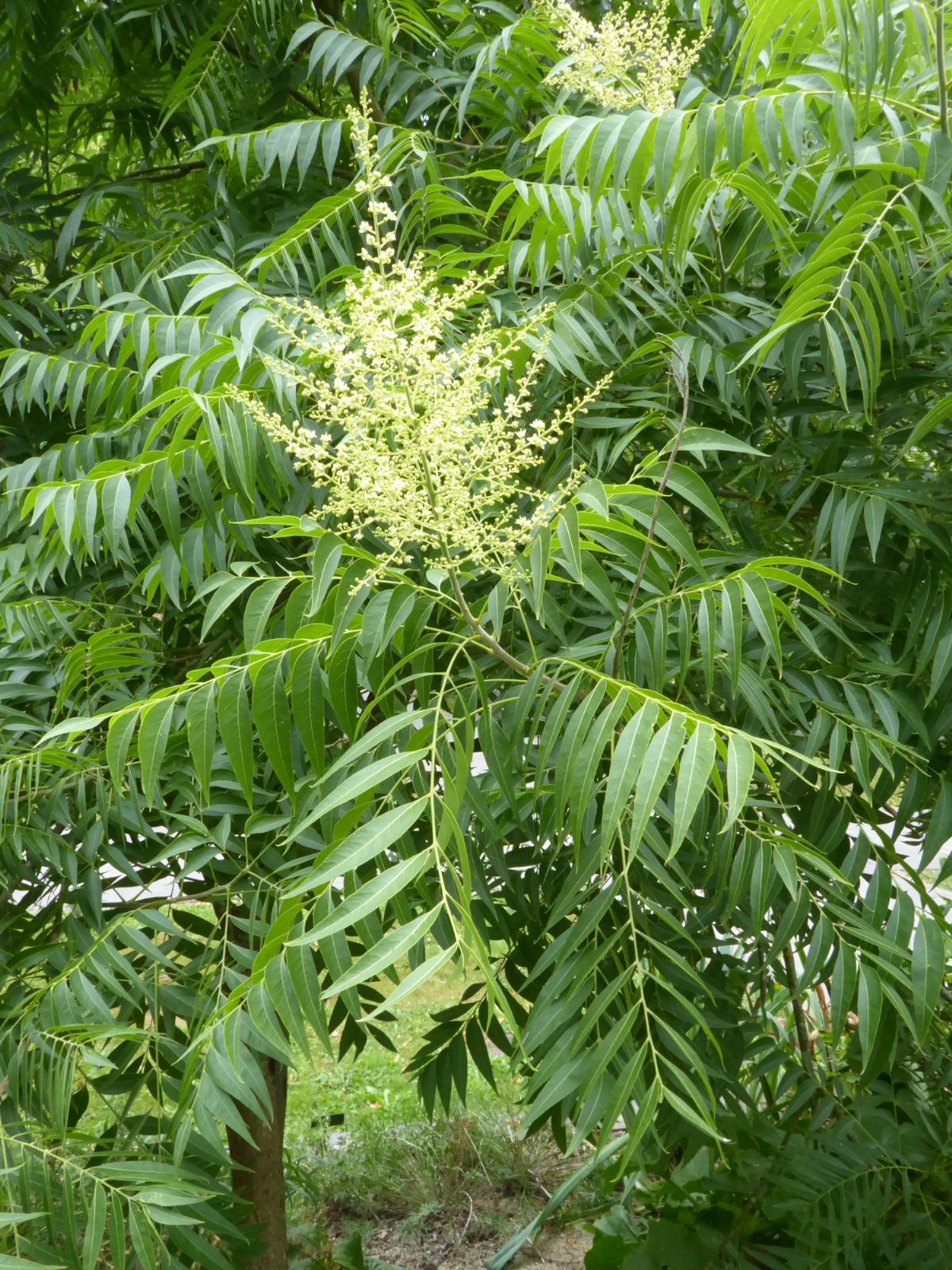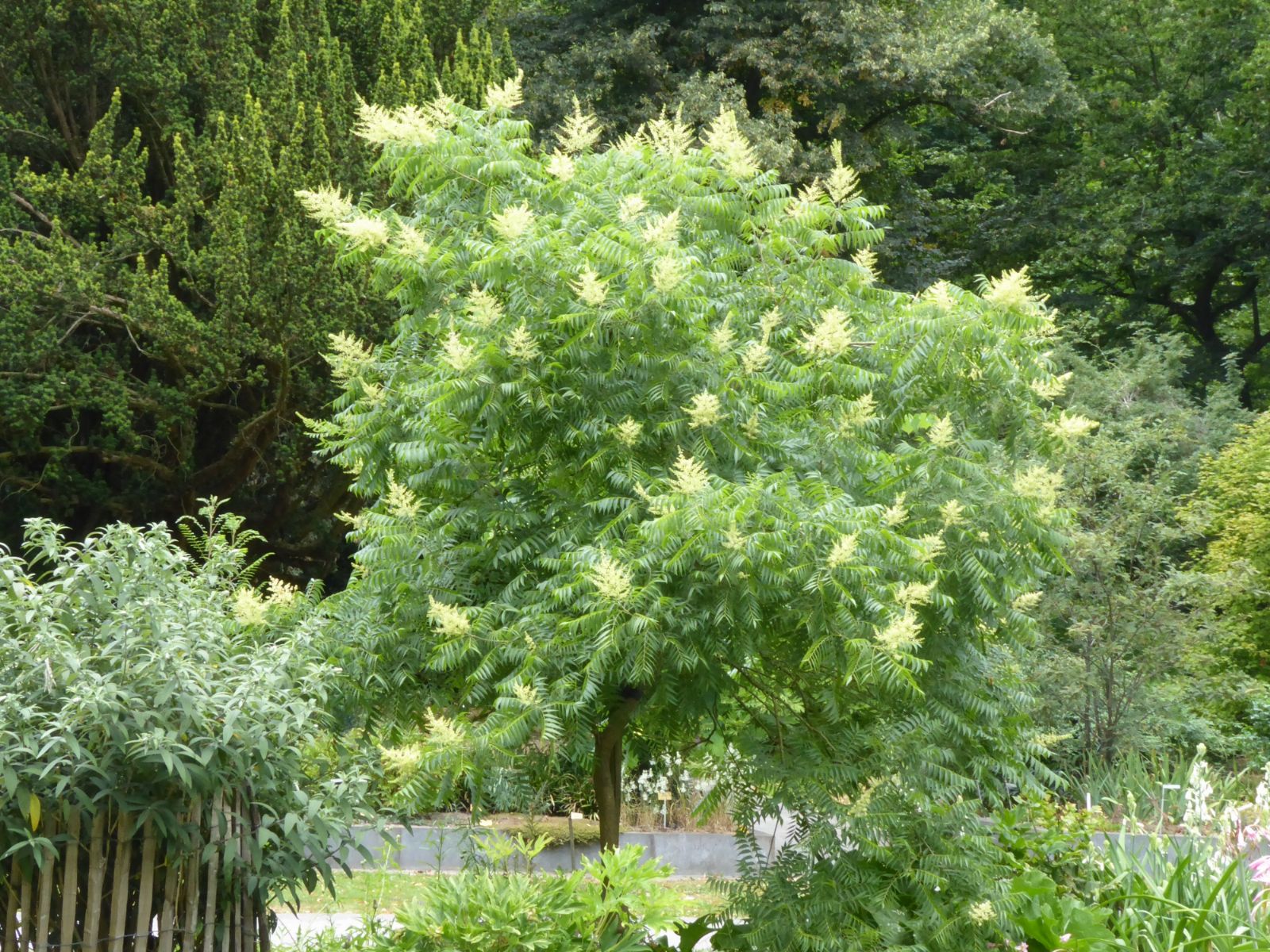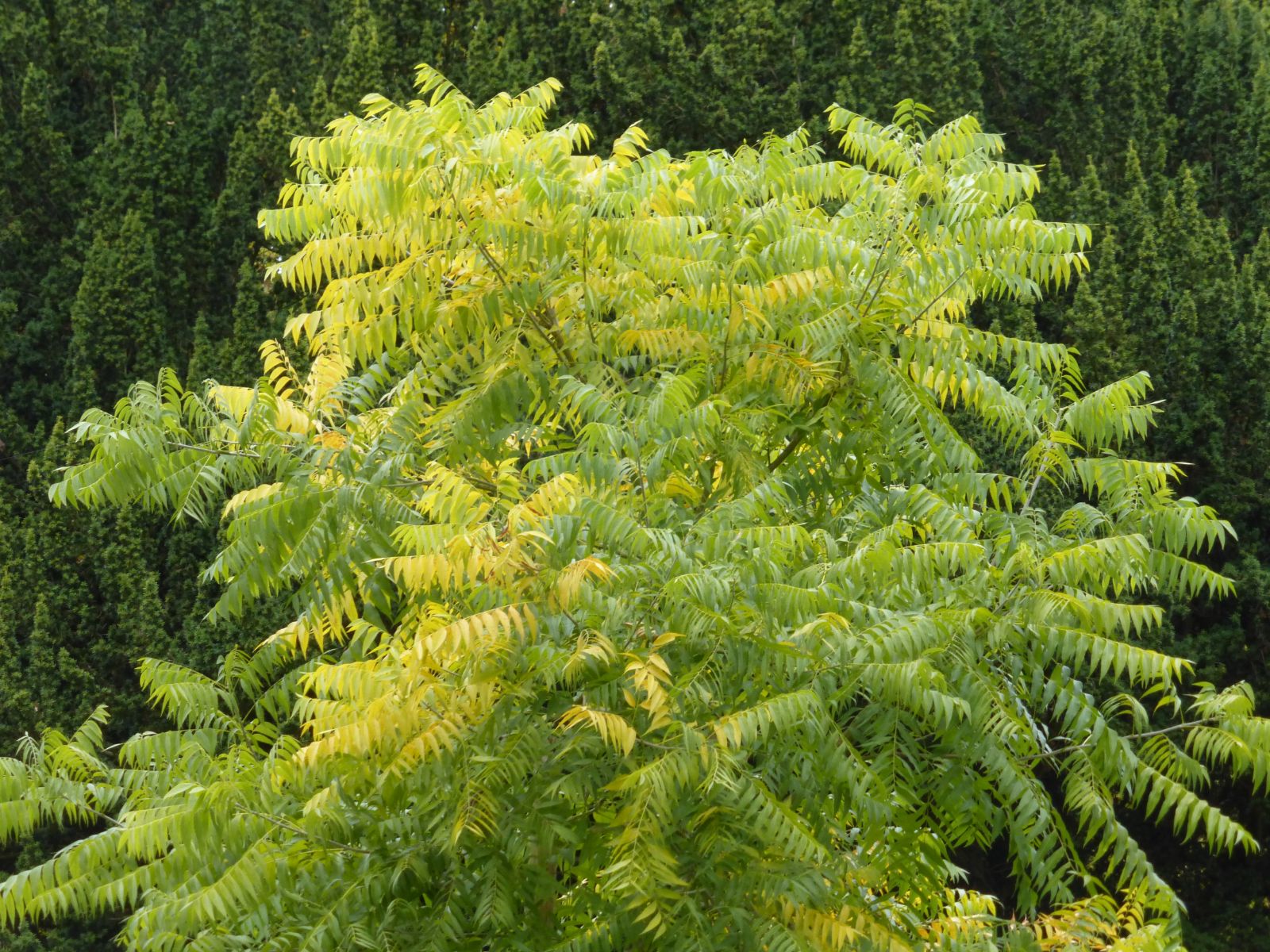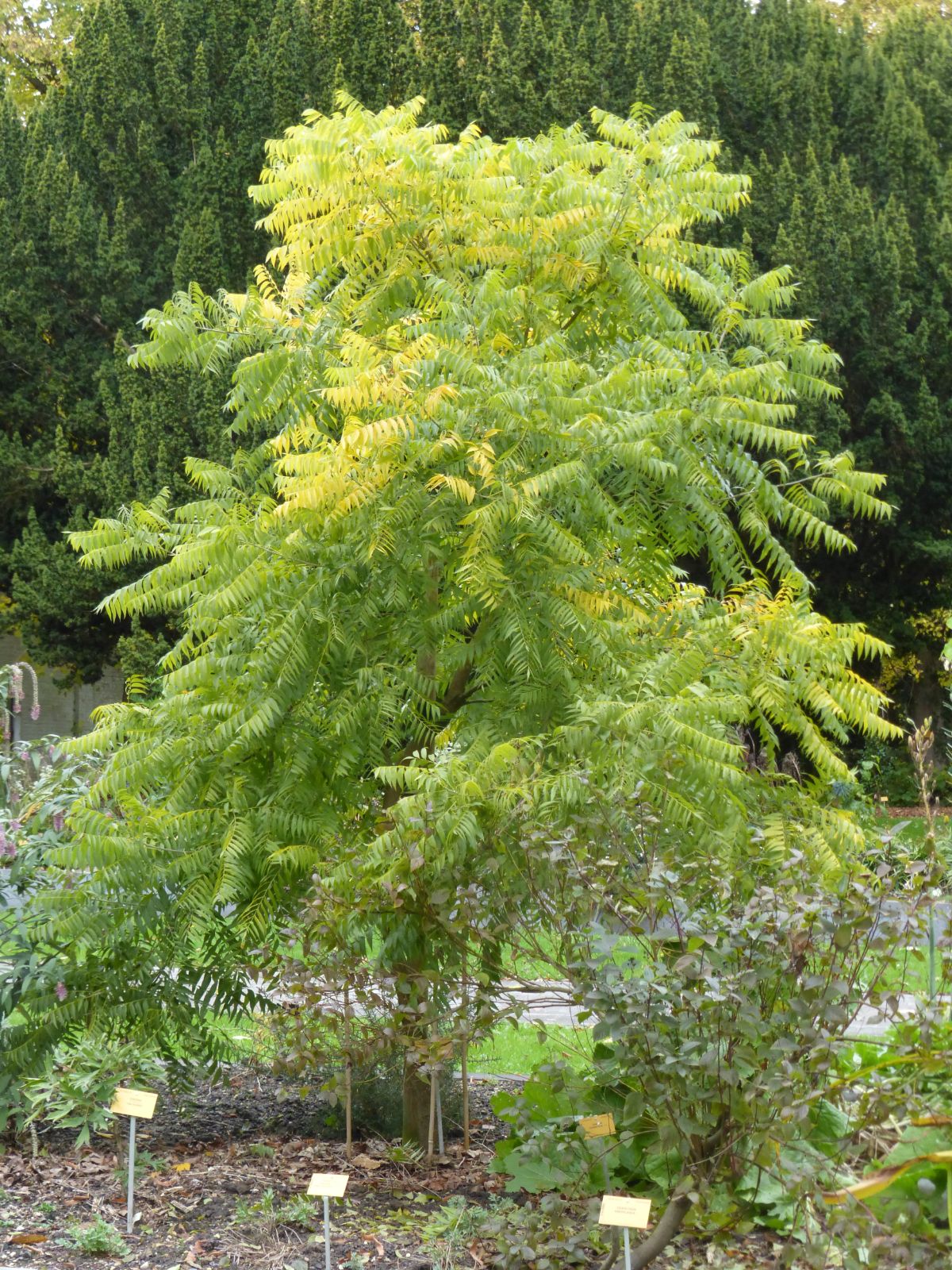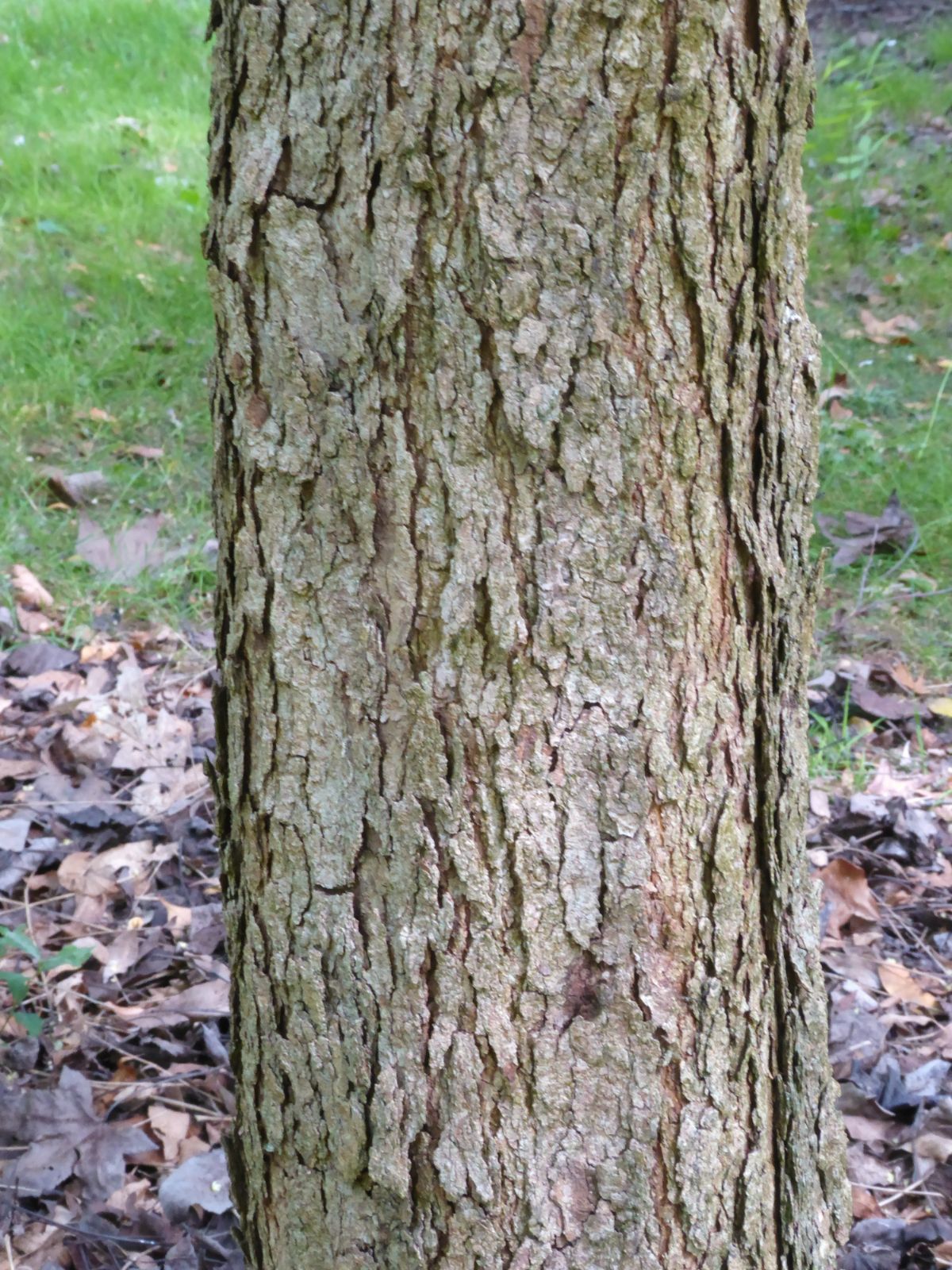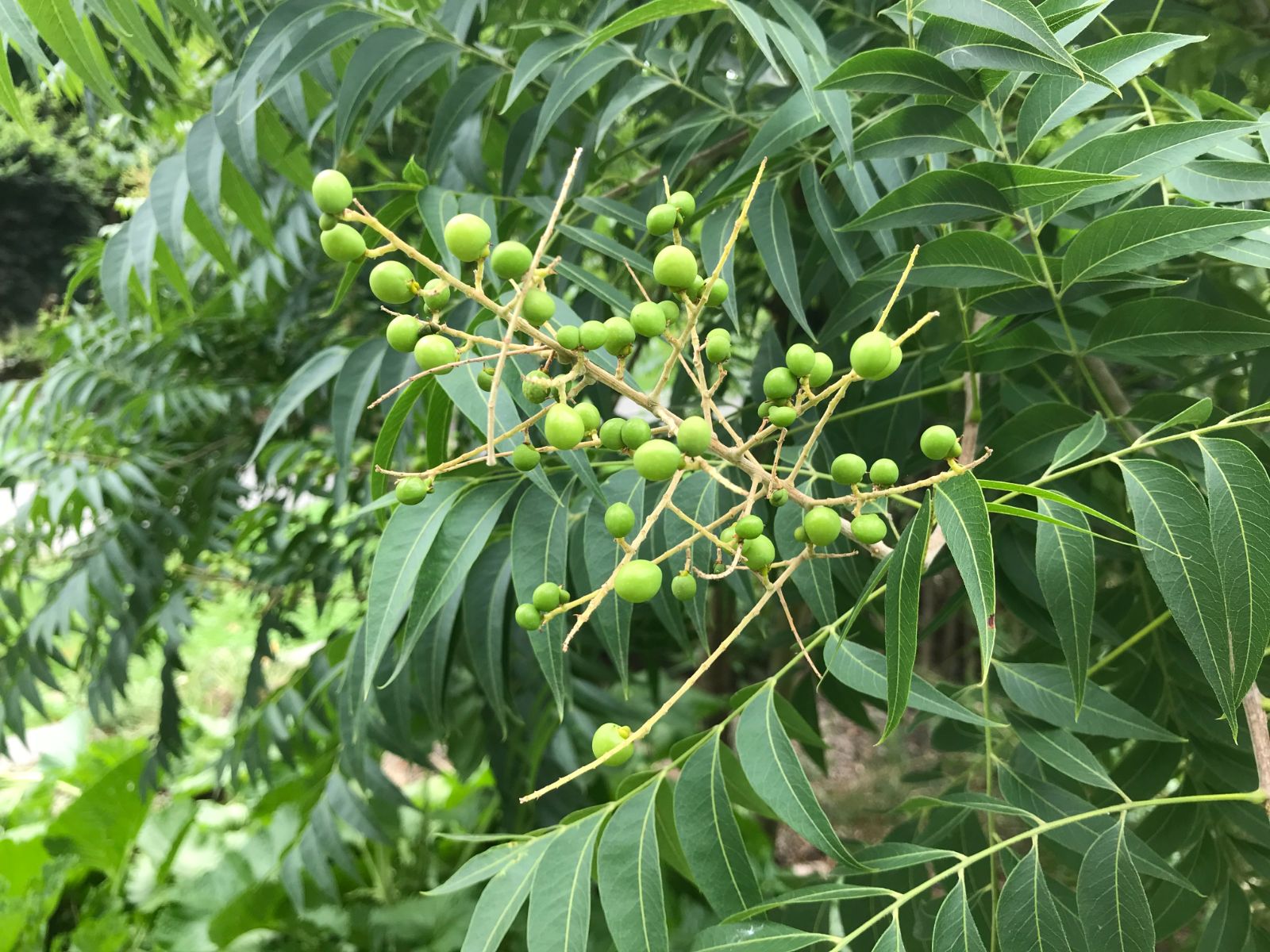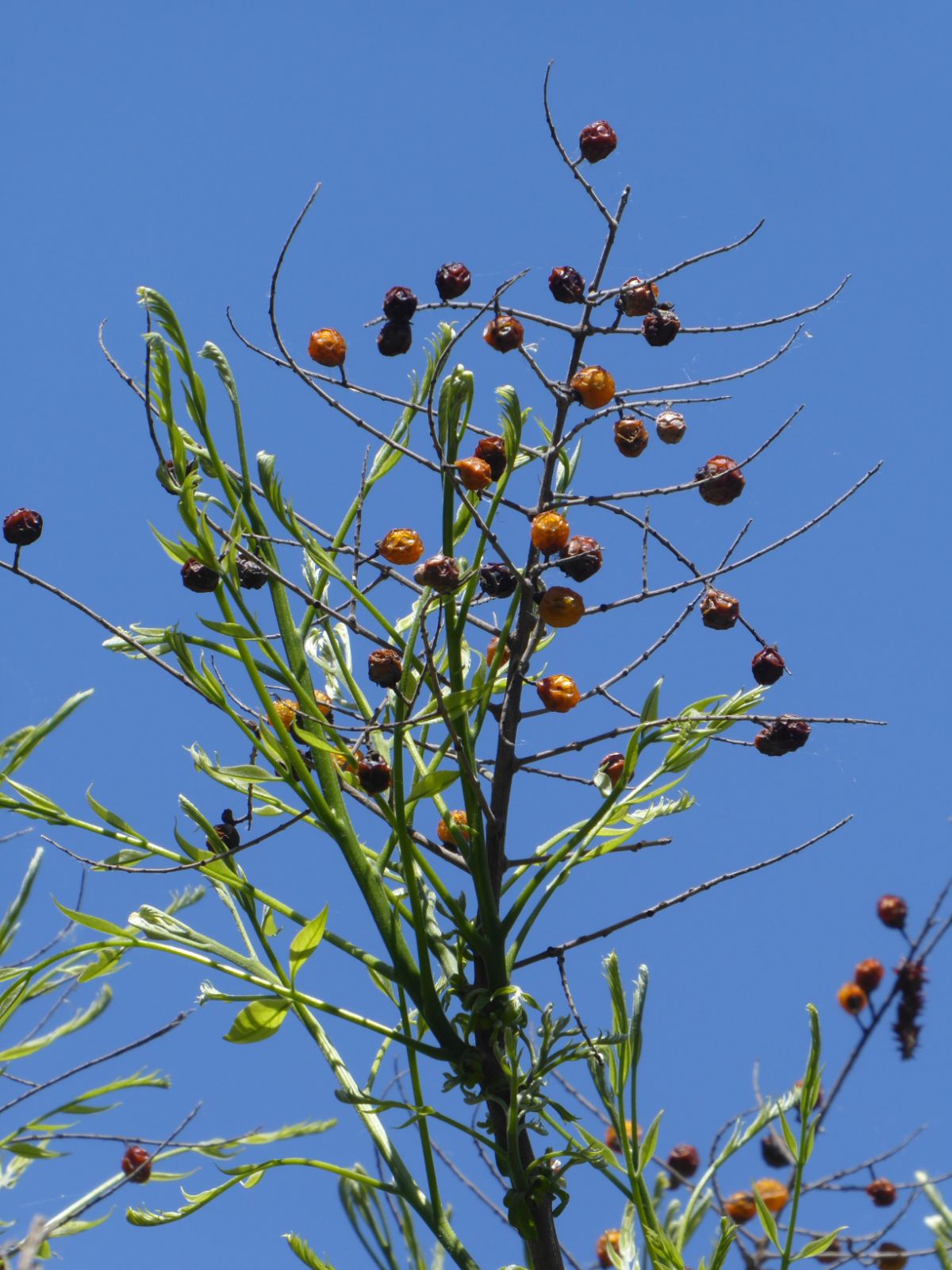Sapindus drummondii
Credits
Article from Bean's Trees and Shrubs Hardy in the British Isles
Recommended citation
'Sapindus drummondii' from the website Trees and Shrubs Online (treesandshrubsonline.
Other taxa in genus
A deciduous tree up to 40 or 50 ft high, with scaling bark; young shoots warted, slightly downy. Leaves alternate, pinnate, 10 to 15 in. long, made up of eight to eighteen leaflets which are lanceolate, slenderly pointed, tapered and often oblique at the base, not toothed, 11⁄2 to 31⁄2 in. long, 1⁄2 to 1 in. wide, rather pale green and glabrous above, downy beneath when young especially at the base of the midrib. Flowers yellowish white, 1⁄6 in. wide, produced during June on pyramidal terminal panicles 6 or 8 in. long; sepals narrowly triangular; petals obovate, downy inside; stamens hairy, eight or ten. Fruits about 1⁄2 in. wide, nearly globose, described as having a thin, dark, orange-coloured, semi-translucent flesh; they ultimately turn black.
Native of the southern United States, especially towards the west, and of N. Mexico; introduced to Britain in 1915. It is quite hardy but of little ornamental value. The popular name derives from a fancied resemblance between this species and Melia azederach, known as the China-tree or China-berry in the southern USA, where it is much cultivated.

